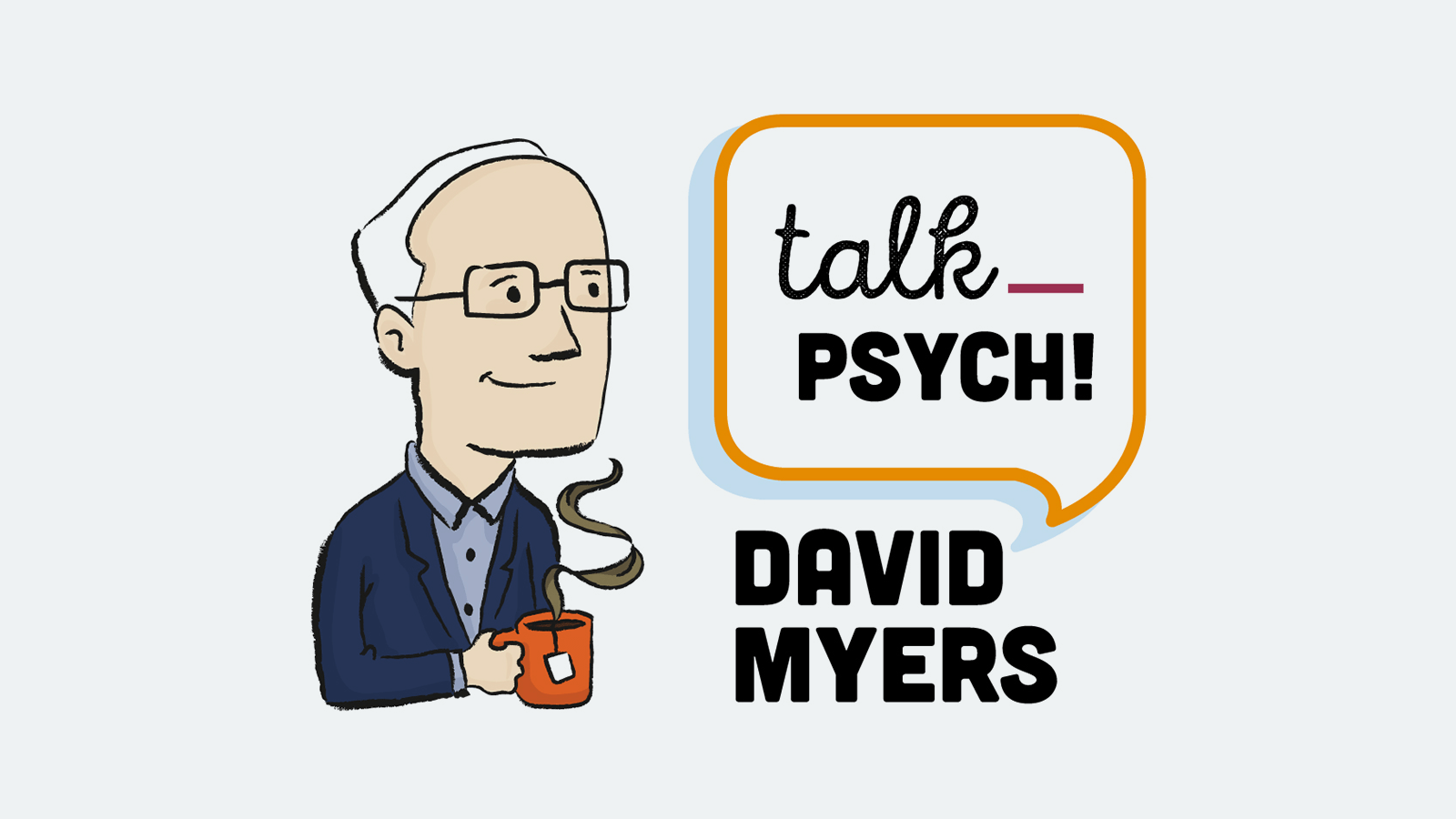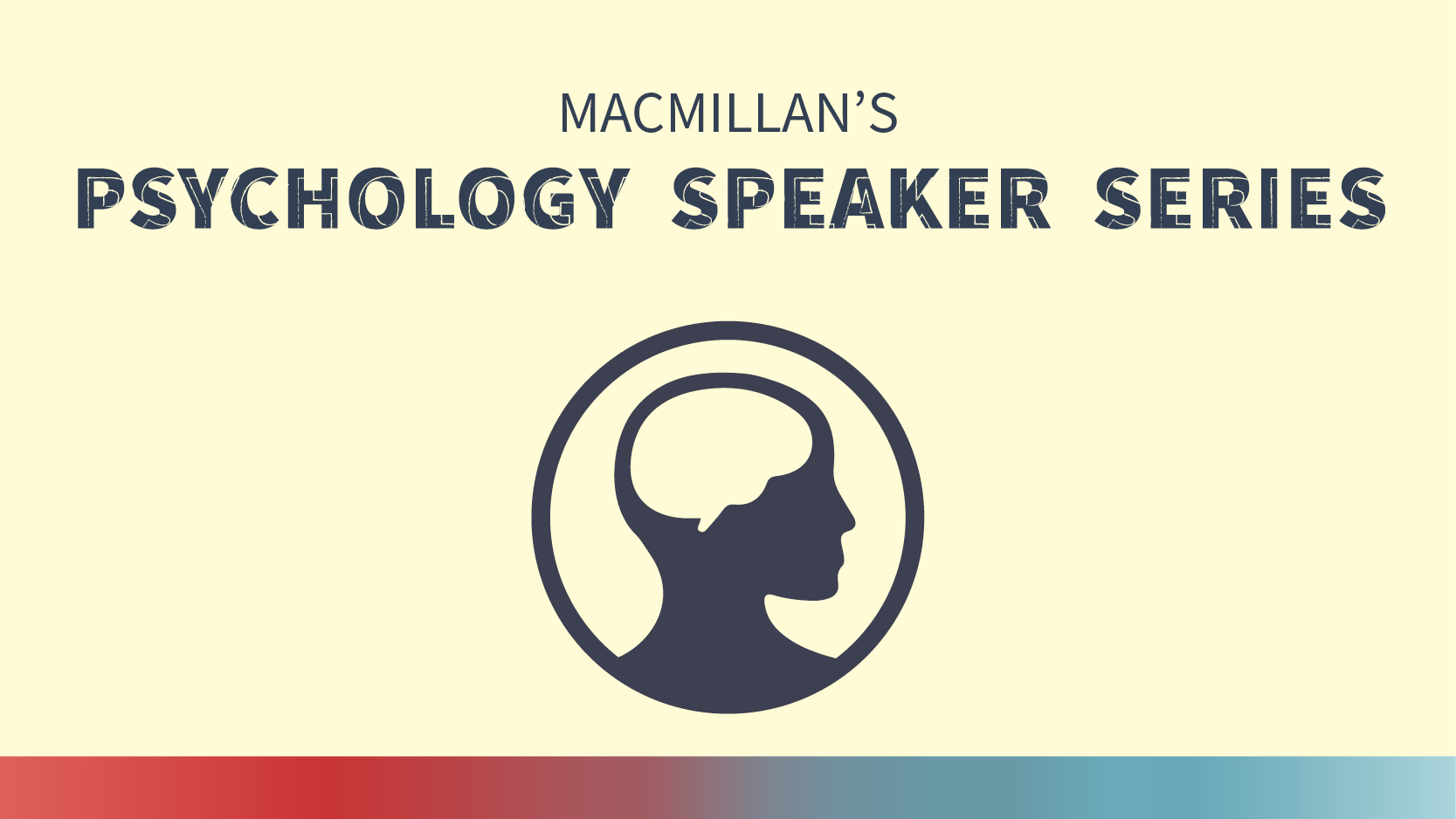-
About
Our Story
back- Our Mission
- Our Leadershio
- Accessibility
- Careers
- Diversity, Equity, Inclusion
- Learning Science
- Sustainability
Our Solutions
back
-
Community
Community
back- Newsroom
- Discussions
- Webinars on Demand
- Digital Community
- The Institute at Macmillan Learning
- English Community
- Psychology Community
- History Community
- Communication Community
- College Success Community
- Economics Community
- Institutional Solutions Community
- Nutrition Community
- Lab Solutions Community
- STEM Community
- Newsroom
- Macmillan Community
- :
- Psychology Community
- :
- Psychology Blog
- :
- Psychology Blog - Page 3
Psychology Blog - Page 3
Options
- Mark all as New
- Mark all as Read
- Float this item to the top
- Subscribe
- Bookmark
- Subscribe to RSS Feed
Psychology Blog - Page 3
Showing articles with label Learning.
Show all articles
Expert
11-26-2017
11:28 AM
I recently finished Sam Kean’s (2012), The Violinist’s Thumb the history, the present, and the future of DNA research. Kean writes, “Genes don’t deal in certainties; they deal in probabilities.” I love that – and I’m using it the first day of Intro Psych next term: “Psychology doesn’t deal in certainties; it deals in probabilities.” I already talk about correlations as probabilities. The stronger the correlation, the higher the probability that if you know one variable, you can predict the other variable. In the learning chapter, it’s not unusual for a student to say, “I was spanked, and I turned out okay.” Now I can repeat, “psychology doesn’t deal in certainties; it deals in probabilities.” When children are spanked, it increases the probability of future behavioral problems (Gershoff, Sattler, & Ansari, 2017). It is not a certainty. Whenever aggression comes up as a topic, a student will say, “I play first-person-shooter games, and I’ve never killed anybody.” Again, “psychology doesn’t deal in certainties; it deals in probabilities.” Playing violent video games increases the chances of being aggressive. Watching violent movies increases the chances of being aggressive. Listening to violent-themed music increases the chances of being aggressive. (List is not exhaustive.) The more of those factors that are present, the greater the probability of behaving aggressively (Anderson, C, Berkowitz, L, Donnerstein, E, Huesmann, L, Johnson, J, Linz, D, Malamuth, N, & Wartella, 2003). It is not a certainty. A student says, “I was deprived of oxygen when I was being born, and I haven’t developed schizophrenia” (McNeil, Cantor-Graae, & Ismail, 2000). (Okay, I have never had a student say this, but I wanted one more example.) Being deprived of oxygen at birth increases the probability of developing schizophrenia. It is not a certainty. Any time a student reports an experience that does not match what most in a research study experienced, I can say “Like genetics, psychology doesn’t deal in certainties; it deals in probabilities.” References Anderson, C, Berkowitz, L, Donnerstein, E, Huesmann, L, Johnson, J, Linz, D, Malamuth, N, & Wartella, E. (2003). The influence of media violence on youth: . Psychological Science In The Public Interest (Wiley-Blackwell), 4(3), 81–110. https://doi.org/10.1111/j.1529-1006.2003.pspi_1433.x Gershoff, E. T., Sattler, K. M. P., & Ansari, A. (2017). Strengthening Causal Estimates for Links Between Spanking and Children’s Externalizing Behavior Problems. Psychological Science, 95679761772981. https://doi.org/10.1177/0956797617729816 Kean, S. (2012). The Violinist’s Thumb. New York City: Little, Brown, and Company. McNeil, T. F., Cantor-Graae, E., & Ismail, B. (2000). Obstetric complications and congenital malformation in schizophrenia. In Brain Research Reviews (Vol. 31, pp. 166–178). https://doi.org/10.1016/S0165-0173(99)00034-X
... View more
Labels
0
0
3,377
Expert
08-02-2017
12:08 PM
One of the great joys of attending conferences – in this case, the American Psychological Association convention – is the conversations with both new and old friends. This morning I had breakfast with Linda Woolf (Webster University; an old friend). She posed an interesting question, and before my first full cup of coffee, it was a little unfair. She noted that in our professional circles we frequently talk about psychology books we think psychology majors should read. She wondered what non-psychology books I’d recommend. That’s both an easy and a difficult question. It’s easy to find book that contain psychology, but difficult in deciding of all the books out there, what books I’d recommend. The two that came pretty quickly to mind were: The Boys in the Boat by Daniel Brown. About the University of Washington men’s crew who rowed in the 1936 Olympics in Berlin, the book gives us a healthy does of prejudice and perseverance. The Day the World Came to Town by Jim DeFede. On 9/11/2001 when the U.S. airspace closed, planes flying west across the Atlantic had to land in Canada. Thirty-eight of them landed in Gander, Newfoundland. Almost 7,000 visitors literally dropped into a town of 9,000 for five days. DeFede restores our faith in humanity with story after story of altruism. The musical Come From Away expands on those stories including coverage of prejudice, stress and coping, and ingroups/outgroups. (Honestly, the book may do the same, but it’s been years since I’ve read it.) After having had my full dose of coffee and a few more hours to reflect – and a chance to review my Goodreads books, here are some more non-psychology books recommended for psychology majors. Born a Crime by Trevor Noah Noah grew up in South African as “colored,” the South African term for half white/half black. His experience gets wrapped up in ingroups/outgroups, both sorting out what that means for him and being on the receiving end of other people’s assumptions about his group membership. The Warmth of Other Suns by Isabel Wilkerson Starting with World War I, African Americans started in earnest to move out of the south to points west and north. Spotlighting three people who left different places at different times for different locales, Wilkerson helps her readers understand the prejudice and discrimination that drove African Americans from the south to the different-looking prejudice and discrimination of their new homes. Sally Ride by Lynn Sherr Becoming the first U.S. woman in space had its challenges. More prejudice, discrimination, and perseverance in this book. When asked at a crew press conference in 1982 “Dr. Ride, apart from the obvious differences, how do you assess the differences in men and women astronauts?” Dr. Ride replied, “Aside from the obvious differences, I don’t think there are any.” Grandma Gatewood’s Walk by Ben Montgomery Emma Gatewood in 1955 and at the age of 67 decided to hike the 2,050-mile Appalachian Trail. Alone. This one will make students rethink their assumptions about gender and age. The Man Who Loved Only Numbers by Paul Hoffman Paul Erdös (pronounced air-dish) was a mathematical genius. But his biography is less about intelligence than it is about… well, it’s tough to describe. Being comfortable in your own skin, may be a good descriptor. Erdös was unapologetically Erdös. He couch-surfed from the home of one mathematician to another. His hosts didn’t know when he was coming until he appeared on their doorsteps, and they didn’t know when he was leaving until he left. He would ask strangers to tie his shoes. He offered cash to grad students to solve mathematical problems. The more difficult the problem, the greater the cash award. And Erdös published prolifically. Mathematicians have an Erdös number. If you published a paper with Erdös, your number is one. If you published with someone who published a paper with Erdös, your number is two. And so on. Addiction by Design by Natasha Dow Schüll [This book may not technically meet the requirements of the category given the amount of psychology in it.] This book contains everything you wanted to know about slot machines and then some. If you’re teaching that pushing buttons on a slot machine is an example of positive reinforcement, you’re wrong for a healthy chunk of slot machine users. Negative reinforcement would be a better characterization. Regular users of slot machines play not to win but play to enter the zone where they don’t have to think about problems at work, with their spouse, or with their kids. Winning just means being able to not think even longer. I managed to give you a list that is all nonfiction. Please share your recommendations in the comments – and I’d love to see some fiction in the list!
... View more
Labels
-
Gender
-
Intelligence
-
Learning
-
Social Psychology
0
0
3,314
Expert
06-25-2017
03:06 AM
Here’s an interesting example of classical conditioning being applied to help solve a serious problem. The Military Suicide Research Consortium at Florida State University received a Department of Defense grant to find ways to prevent suicides by military members (Joiner, 2017). One avenue of research looked at ways of strengthening marriages, reasoning that those with stronger relationships are less likely to take their own lives (Improving marriages…, n.d.). Military marriages face a number of challenges, including lengthy deployments. While many factors influence decisions to divorce, spending months away from one’s partner is a likely contributing culprit. “[S]erving lengthy deployments increases the risk of divorce and that the longer the deployment, the greater the risk of divorce” (Improving marriages…, n.d.). Female military service members are almost three times as likely to divorce as their male counterparts. In 2016, for example, 7.7% of female Marines divorced compared to 2.8% of male Marines. Overall, 3.1% of military personnel divorced in 2016 (Bushatz, 2017). Let’s make a quick digression to talk about divorce rates. “The military divorce rate is calculated by comparing the number of troops listed as married in the Pentagon's personnel system at the beginning of the fiscal year with the number who report divorces over the year” (Bushatz, 2017). These numbers cannot be compared to national data since the Centers for Disease Control and Prevention (CDC) calculates divorce differently. Forty-five state health departments send the number of divorces in their states to the CDC. Because researchers at the CDC don’t know how many marriages were in each of those states to begin with, they can’t calculate a percentage of divorces like the military can. Instead, because the CDC researchers know the population of those 45 states, they can calculate a divorce rate per 1,000 people. In 2015, for example, those 45 reporting states had a combined population of 258,518,265. The number of divorces that year in those 45 states? 800,909. That works out to a divorce rate of 3.1 per 1,000 people (Centers for Disease Control and Prevention, 2017). Now, back to helping marriages succeed. Is there a low-cost way to strengthen relationships even when the marriage partners are separated by thousands of miles for months at a time? James McNulty, Michael Olson, and colleagues (2017) thought that classical conditioning could work. Couples, 144 of them, were randomly divided into an experimental group and a control group. Every three days for a total of 13 sessions, participants experienced 225 trials where images or words flashed on a computer screen either singly or paired. Participants were to hit the spacebar when something related to relationships appeared, such as a wedding cake. Embedded within those 225 trials were 25 trials where the participant’s partner’s photo was paired with another photo. Those in the experimental condition always saw the partner’s photo paired with positive stimuli, such as photos of puppies. Those in the control condition always saw the partner’s photo paired with neutral stimuli, such as photos of buttons. Every two weeks from the start of the conditioning trials to two weeks post conditioning, participants completed a series of dependent measures. A priming task timed how quickly participants associated positive words with their partners. And researchers, well, just asked participants how they felt about their marriages. On the priming task, those in the experimental condition reacted faster when positive words were associated with their partner than those in the control condition. And the faster those reaction times, the more likely the participant was to say they were happy in their marriages. Classical conditioning in the experimental condition positive photos (UCS) --> positive feelings (UCR) partner photos --> positive photos (UCS) --> positive feelings (UCR) partner photos (CS) -----------------------------> positive feelings (CR) The researchers are careful to note that while looking at photos of puppies, sunsets, and other positive imagery paired with images of our partners boosts positive feelings toward our partners, this classical conditioning will not make us have positive feelings towards someone we really dislike. In other words, classical conditioning is not a panacea for fixing badly damaged relationships. Consider using this experiment as another example in your classical conditioning lecture. Or provide students a summary of the research and ask them to work in pairs or small groups to identify the UCS, UCR, CS, and CR. References Bushatz, A. (2017, April 28). Female troop divorce up slightly, male rate largely unchanged. Retrieved from http://www.military.com/daily-news/2017/04/28/female-troop-divorce-up-slightly-male-rate-largely-unchanged.html Centers for Disease Control and Prevention. (2017, January 13). Marriages and Divorces. Retrieved June 23, 2017, from https://www.cdc.gov/nchs/nvss/marriage-divorce.htm Improving marriages to decrease suicide risk. (n.d.). Retrieved June 23, 2017, from https://msrc.fsu.edu/funded-research/improving-marriages-decrease-suicide-risk Joiner, T. (2015, October). Military Suicide Research Consortium (Rep. No. W81XWH-10-2-0181). Retrieved http://www.dtic.mil/dtic/tr/fulltext/u2/a622687.pdf McNulty, J. K., Olson, M. A., Jones, R. E., & Acosta, L. M. (2017). Automatic associations between one’s partner and one’s affect as the proximal mechanism of change in relationship satisfaction: Evidence from evaluative conditioning. Psychological Science. doi:10.1177/0956797617702014
... View more
Labels
-
Learning
-
Social Psychology
0
1
8,612
Author
06-15-2017
07:58 AM
In Improving How Universities Teach Science: Lessons from the Science Education Initiative, Carl Wieman—a Stanford physicist, Nobel laureate, and Carnegie U.S. University Professor of the Year (but let’s not feel intimidated)—advocates active learning, which in a recent NPR interview, he describes as teaching the thinking that you really want students to learn. How does a physicist think about a problem, or a chemist, and so on, and what decisions do they make, and then you break that problem down into student, bite-sized pieces. You give them to the students to work on. They usually work in small groups. The instructor is monitoring how the students are thinking. What's right, what's wrong. And then will periodically pull them back together every five or 10 minutes to discuss how they are coming along. Give them feedback on what thinking is right or wrong. Mark Zuckerberg has a similar vision for public schools—for engaging students in self-directed learning, with guiding teachers at their sides. The benefits of active learning are well-known to teaching psychologists. As Nathan DeWall and I note in our forthcoming Psychology, 12 th Edition, To master information you must actively process it. Your mind is not like your stomach, something to be filled passively; it is more like a muscle that grows stronger with exercise. Countless experiments reveal that people learn and remember best when they put material in their own words, rehearse it, and then retrieve and review it again. For Psychology, 12 th Edition, and all of our texts, active learning—via “Concept Practice,” “Immersive Learning,” and “Assess Your Strengths” exercises, and also via simulations and adaptive quizzing—forms the heart of our online resources. So take it from a Nobel laureate/professor of the year . . . or Mark Zuckerberg . . . or just from Dave and Nathan: To learn deeply and remember enduringly, learn actively.
... View more
Labels
-
Learning
1
0
1,828
Expert
05-21-2017
07:50 PM
National Geographic gives you 8 different scenarios in which you have (hypothetically) lied. Choose the most likely reason you lied. As a research methods booster have students discuss the validity of this measure – a measure that has not been used in formal research to the best of my knowledge. The basis for this quiz was recent research on lying. Communication Studies professor Timothy Levine and colleagues (2016) asked participants from five countries to recall a recent occasion when the participants had lied and then write about what took place. Trained coders read the accounts and categorized the motivation for lying. Levine, et.al. found that the most common reason was lying to gain something (45%) – to reap financial benefits (16%), to reap non-financial benefits (15%), to make a good impression (8%), to be humorous (5%). Another 36% lied for self-protection; 22% did so because of a personal transgression and another 14% did so to dodge people they didn’t want to interact with. The least common type of lying (11%) was designed to affect others in some way – to help them (5%), to hurt them (4%), to be polite (2%). Some lying appeared to be “without apparent motive or purpose, lies out of obvious delusion, or lying with blatant disregard for reality and detection consequences” (2%). The remaining 7% of participants didn’t give enough information to code the motive (5%) or the motive didn’t fit one of these categories (2%). After covering operant conditioning, have students work in pairs or small group to identify if the teller of each of these kind of lies has been positively reinforced, negatively reinforced, positively punished, or negatively punished. Ask students to assume that the person has told this kind of lie before; perhaps this person has told this kind of lie many times before. Lied to cover up a personal transgression, e.g. lied to keep an affair from becoming public Lied to avoid someone, e.g., lied to get off the phone with someone you don’t want to talk to Lied for financial gain, e.g., lied on a tax return to get a bigger tax refund Lied for non-monetary benefits, e.g., lied to get people to vote for you Lied to make a good impression, e.g., lied on an online dating profile so people will view you as very attractive Lied to be polite, e.g., lied about liking someone’s shirt to avoid making the person feel bad After students have completed their discussion and if you use an audience response system, ask students to click in to vote for the type of operant conditioning associated with each kind of lie. Walk students through thinking about each type of lie to identify its type of reinforcement. This short activity will help students see that our behavior is often reinforced in unintended ways. References Levine, T. R., Ali, M. V., Dean, M., Abdulla, R. A., & Garcia-Ruano, K. (2016). Toward a Pan-cultural Typology of Deception Motives. Journal of Intercultural Communication Research, 45(1), 1–12. https://doi.org/10.1080/17475759.2015.1137079
... View more
Labels
-
Learning
1
0
4,866
Expert
05-14-2017
12:49 PM
One of my favorite sources for examples of psychological concepts are comic strips. Some of them get worked into lectures, others show up on exams, and sometimes I’ll offer them for a couple points extra credit, especially for new comics that harken back to content covered earlier in the course. Here are some May 14, 2017 comic strips that may be worth adding to your stable of examples. The Betty comic strip gives us a wonderful example of change blindness. Junior, Betty’s son, is dinking around on his phone while explaining his generation’s amazing ability to multitask. During his explanation, Betty calls in her husband to take her place. When Junior’s attention is returned to his parent, he sees his dad and is completely unaware that he had replaced his mom. In Frank and Ernest Frank has a young person working out on his farm. The young person, upon hearing “crop,” thinks cropping photos instead of crops that are planted. For someone who spends a lot of time in the digital world instead of a farming world, that person would be primed to interpret “crop” as photo manipulation. Frazz gives us commentary on the positive reinforcement provided by smartphones. Pick up your smartphone to get a jolt of pleasure in some form – text messages, phone calls, games, social media updates. Caulfield, the boy in the strip, says that his dad “calls them dopamine pumps.” (If you want to dive deeper into smartphone use, I wrote a post on stress and smartphones a few months ago.) Bonus comic strip. My favorite classical conditioning comic strip comes from Lio (November 14, 2009). A monster replaces Pavlov’s dogs, “Monsta Treats” replace meat powder, and the sound of a ripping bag replaces the tone. Do you have any favorite comic strips that illustrate psychological concepts?
... View more
Labels
-
Learning
-
Memory
-
Sensation and Perception
1
0
4,716
Author
04-19-2017
10:25 AM
In today’s tech world, many students come equipped with laptops for “taking notes.” Actually, as I noted in an earlier blog post, Pam Mueller and Daniel Oppenheimer have found that when it comes to remembering and applying concepts, “the pen is mightier than the keyboard.” With laptops, it is easy to take verbatim notes. When writing longhand, students more actively process the material, summarize it in their own words, and learn it more deeply. FatCamera/Getty Images And as students sitting near the back of the classroom can vouch, their peers often aren’t taking notes. They’re checking Facebook, playing games, messaging, online shopping, and information searching (stimulated by the class, we can hope). So, does this multitasking during class time exact a cost? When surveyed, students “report little or no effect of their portable device use on learning class material,” report Susan Ravizza, Mitchell Uitvlugt, and Kimberly Fenn from prior studies. Really? To assess that presumption, Ravizza et al. secured the permission of 84 Michigan State introductory psychology students to have their class-time Internet use monitored. (The students afterward reported that their use was unaffected by the confidential monitoring.) The results: During the 110 minute class, the average student did nonclass-related Internet browsing for 37 minutes. And the more the Internet use, the lower the final exam score—even after controlling for students’ intelligence (ACT score), motivation, and course interest. The bottom line: “These findings raise questions” about encouraging students to bring laptops to class when not essential to class activities.
... View more
Labels
-
Learning
0
0
2,457
Expert
01-21-2017
10:31 AM
You have likely heard of the classroom demonstration where the students condition the instructor or a student volunteer to do some behavior by clapping (positive reinforcement) whenever the person gets closer to the behavior. Jon Skalski, Joel Lynch, and Amy Martin (2017) from Rockford University take this demo up a notch by modifying it to help students understand not only shaping, but also positive/negative reinforcement/punishment. Skalski (personal communication, January 19, 2017) explains: I have a student volunteer step outside the classroom. The class selects a behavior that they would like to shape in his/her absence (like standing the corner and/or scratching the head). The volunteer returns to the room. I place a backpack loaded with textbooks on his/her shoulders. Then, I remove a couple books when the student starts doing something that approximates what the class has selected for the volunteer to do (as a form of negative reinforcement). I add books (as a form of positive punishment) when the student is not doing what I am trying to shape. I add skittles to a cup (positive reinforcement) and also take skittles away from the cup (negative punishment) to shape approximations of the desired outcome. Thus, the demonstration involves rewarding (both positively and negatively) and punishing (both positively and negatively) at the same time, at least in shaping a single behavior, and it is quite vivid and memorable. I then help students to process and think about the demonstration in order to make distinctions about positive and negative forms of reinforcement and punishment. During the demonstration, Skalski changes which technique he is using from moment to moment. In doing so, students can see the impact each change has on the volunteer’s behavior. After successfully training the volunteer to do the selected behavior. Skalski recaps what the students just saw. Shout out to Jon Skalski for this clever demonstration! REFERENCE Skalski, J., Lynch, J, & Martin, A. (2017, January). Teaching negative reinforcement; it’s not punishment. Poster session presented at the National Institute on the Teaching of Psychology, St. Petersburg Beach, FL.
... View more
Labels
-
Learning
2
1
8,603
Expert
12-27-2016
09:28 AM
It can be an eye-opener for a parent when their child starts to mimic their behavior in the form of pretend play. Even more so when what is being portrayed is pre-divorce arguments and the stand-ins are Mary, Joseph, and Jesus. After covering observational learning (learning) or pretend play (development), share with students this example courtesy of Carol Weis and the New York Times (2016). Weis and her soon-to-be ex-husband had had a number of arguments leading up to their decision to divorce. It was near Christmas, and the house decorations included a nativity set. The parents explained to their then-5-year-old daughter that they were separating. Following her father’s moving out, the child began to play with the nativity set. “Through her thoughtful manipulation, Mary and Joseph carried on arguments with each other, similar to the ones she’d witnessed between her dad and [her mom].” In the category of observational learning, I had a student years ago who said one day when she was picking up her 3-year-old son from preschool, the staff asked to speak with her for a minute. That day at recess, her son was near the top of the slide waiting for another child to slide down. He got impatient and yelled, “Too slow b****! Get the **** out of my way!” My student, somewhat sheepishly, said to the class, “I have a problem with road rage.” If you discuss the nativity example during observational learning, give students an opportunity to share their favorite examples of observational learning. They could be their own experiences or what they witnessed in younger siblings or their own children. If you discuss the nativity example during development, give students an opportunity to share their favorite examples of pretend play. Again, they could be their own experiences or what they witnessed in younger siblings or their own children. In either case, consider using think-pair-share. Give students a minute or two to consider their examples, then a couple minutes to share with a neighbor, then ask for a few volunteers to share their examples. REFERENCE Weis, C. (2016, December 23). Working through divorce with Mary and Joseph. Retrieved December 27, 2016, from http://www.nytimes.com/2016/12/23/well/family/working-through-divorce-with-mary-and-joseph.html
... View more
Labels
-
Developmental Psychology
-
Learning
0
0
2,959
Expert
11-09-2016
12:34 PM
“A cat comes running at the sound of the can opener, that’s classical conditioning, right?” No, no it is not. “Remember,” you say to the student who asks this question, “classical conditioning is involuntary. Since running is a voluntary behavior, it’s operant conditioning.” (The sound of the can opener is a discriminative stimulus that cues the cat. “If I run in there right now, my voluntary running behavior will be reinforced with cat food!”) After explaining to his students that classical conditioning results in an involuntary response and operant conditioning needs a voluntary behavior, but before getting into the specifics of each, Bart Thompson (Salem Hills High School in Salem, Utah) gives his students practice at sorting involuntary responses from voluntary behaviors. Thompson divides his class into small group. Each group gets 40 slips of paper; each slip of paper includes an example of classical or operant conditioning. Students are tasked with sorting the examples into two stacks: involuntary response and voluntary behavior. There are two things that I really like about this approach (which I’m using next term!). First, it gets students thinking in terms of involuntary responses and voluntary behaviors immediately. This seems to be such a sticking point for some students later, that (literally!) sorting this out early should help that. Second, it’s a wonderful application of interleaving. If we want students to know the difference between classical and operant conditioning – and we do – students need practice seeing both kinds of learning and identifying which is which. If you don’t have 40 examples of classical and operant conditioning, you can scour the internet. Be careful though. There were some examples I found that the author said were classical conditioning but were actually operant conditioning. Alternatively, ask your students this term to submit, say, three examples of each. You could ask students to label the classical conditioning components and identify whether the operant conditioning examples are positive/negative reinforcement/punishment (and explain their choices). This could be an extra credit assignment or an optional for-points assignment. Once groups have their 40 slips of paper sorted, ask groups to pair up and compare their sorts. Were there any that they had sorted differently? Can they resolve their differences? Circulate among the groups. For any that groups appear to be stuck on, make a note to discuss as a class. As you move your coverage into the specifics of classical and operant conditioning, you can come back to these 40 examples.
... View more
Labels
-
Learning
0
0
3,940
nathan_dewall
Migrated Account
07-20-2016
11:16 AM
Originally posted on April 5, 2014. Each year, the American government spends billions of dollars to help students who struggle to meet their potential. These students languish in traditional school programs. They struggle socially. And they ultimately have less impact on society than they might if they had received educational opportunities that maximized their abilities. New research suggests that students who occupy this group are the ones we often worry about the least: super smart kids. The study followed several hundred students from age 13 to 38. At age 13, all of the students showed testing ability that placed them in the top 0.01 percent of students their age. Put another way, the study participants outscored students in the top 1 percent by a factor of ten. That’s pretty smart! The super smart kids flourished. Their rate of earned doctorates dwarfed the average American rate: 44 percent compared to 2 percent. They held jobs that gave them influence over millions of dollars and, in some cases, millions of lives. It’s easy to shut the book there. Super smart kids succeed. Big deal. But these super smart kids often experience challenges that also plague so-called “at-risk” students. They don’t have class material that pushes them intellectually. Before their first day of class, they know the course material. What happens next? What do they do for the next six to eight hours while their peers struggle to understand the material they’ve already mastered? The super smart kids might also struggle to connect socially. If academics are such a breeze, might it be difficult to relate to your peers? Might you experience stress when your peers have to study at night while you look for other opportunities to pique your intellectual interests? Might you act less intelligent to fit in?
... View more
Labels
-
Intelligence
-
Learning
-
Personality
-
Social Psychology
0
0
2,034
nathan_dewall
Migrated Account
07-20-2016
10:50 AM
Originally posted on May 5, 2014. From an early age, I wanted to be an astronaut. I memorized Mercury astronaut missions. I dreamt of using a manned maneurvering unit to glide through space. I cried when the Challenger exploded. I still dream of going to space, but I know it’s a long shot. Still, space exploration captivates me. What will be the biggest obstacle to a successful Mars mission? It won’t be inadequate fuel, faulty aerodynamics, or clunky helmets. Social isolation is the greatest barrier to interplanetary travel. Don’t believe me? Think about the past 520 days of your life (about a year and five months). That’s how long it takes to travel to Mars and return. How many people did you see during that time? How many conversations did you have? Did you attend a sporting event? A play? A worship service? Maybe a loved one was born or passed away. Now wipe those experiences away. Instead, imagine that during this period of your life you lived in cramped quarters with only five other people, no fresh air, and no sunlight. This is not a mere thought experiment. The experiment happened, with funds from the Russian Academy of Sciences. What happened? Quite a bit. In research recently reported in the Proceedings of the National Academy of Sciences, the six volunteer marsonauts completed lots of tasks to keep their minds fresh. They also slept like babies without the daily rigmarole of daily work commutes, grocery shopping, or other daily drivel. Then the guys started sleeping like polar bears in hibernation. Then they started doing less, becoming even more sedentary amidst almost endless boredom. Space is only cool for so long. The good news? They all made it. There weren’t any major scuffles, and the guys probably formed lifelong friendships. They even showed signs of cognitive improvement. But the marsonaut volunteers each handled the prolonged social isolation differently. One of them shifted to a 25-hr sleep-wake schedule, which meant that he was alone (awake or asleep) 20% of the 520 day mock mission. As the researchers sift through their massive data set (to put it in perspective, they measured 4.396 million minutes of sleep!), I’m sure we’ll learn more about the psychological consequences of prolonged social isolation. For now, we can still look into the night sky, find the Red Planet, and dream of people visiting sometime in our generation. We know they’ll sleep well—and a lot.
... View more
Labels
0
0
2,875
nathan_dewall
Migrated Account
07-20-2016
07:50 AM
Originally posted on July 17, 2014. Lloyd Cosgrove was his town’s city manager, butcher, and Presbyterian minister. He had a shiny head, bushy eyebrows, and a whooping laugh. If you want Lloyd to remain unique, try not to think about him too much. Why? Repetition breeds bland memories. Our brain’s memory center, the hippocampus, leaves different traces of information each time we call up something from our past. This is why our memories of the same past events shift. What gets left behind are the details. You might forget that Lloyd was a butcher or blocked out his whooping laughter. Or you might invent new details about him. Was he a Presbyterian or Lutheran minister? A city manager or a city councilman? Memory is a funny thing. In a recent study, people who rehearsed an event three times recalled fewer details compared with people who rehearsed the same event once. Repetition improved how well people recognized pieces of information, but it squeezed out the details. We might romanticize details. Do I need to remember the outfit my wife wore on our first date? (I do.) Do I need to remember where I ate my first taco? (I don’t.) Or should I become content that the details that add color, meaning, and spice to my daily experiences will become gray, hallow, and bland the more my memory plays them back? Ask me tomorrow. I’ll have a different memory of the question than I do today.
... View more
Labels
-
Learning
-
Memory
0
0
1,533
nathan_dewall
Migrated Account
07-20-2016
07:37 AM
Originally posted on October 16, 2014. One of my earliest memories is my dad giving me a high five. He was training for a marathon and agreed to take me, his talkative four year-old, on a run. I ran an entire mile. When I finished, red-faced and smiling, he said, “Give me five, son.” It was my first high five. According to a new study, high fives go a long way in motivating children. Five and six year-old children completed a task in which they imagined experiencing success. Next, the children received different types of praise. Some children received verbal praise that would highlight an individual trait (“You are a good drawer”), whereas other children received a high five. What motivated the children more, clear praise for being good at something or a high five? The high five won handedly. When the children bumped into a setback, those who received a high five persisted more than the other kids did. We might reconsider how we praise children’s behavior. If we tell children they’re geniuses, we’ve told them that they have a stable trait that isn’t under their control. If they fail a test, the responsibility can’t be theirs because they have a trait that should guarantee success on all intelligence test. Blame the teacher. Criticize the test. Give up and find something else to do. Don’t find a better way to study. By giving a high five, children know they have done something well. They also know that their success is under their control. I have run many miles since my first high five, but that first one with my dad will always hold a special place in my heart. It motivated me, either consciously or unconsciously, to continue to push my limits. For that high five, I’m grateful.
... View more
Labels
-
Learning
-
Memory
-
Motivation
0
0
2,946
nathan_dewall
Migrated Account
07-20-2016
07:34 AM
Originally posted on October 23, 2014. No matter how many babies I meet, I’m always left wondering what they want. Does a short squeak followed by a shrill squeal signal that the baby is hungry? That I left the dog outside by accident again? Or is the baby simply testing out her developing vocal chords? Driven by confusion and frustration, I might insert a pacifier into the baby’s mouth. The baby seems soothed, and I can take a breather. But according to one recent study, pacifiers disrupt our ability to understand a baby’s emotional state. Adult participants viewed pictures of happy and distressed babies. Sometimes the babies wore pacifiers and others times they didn’t. When the baby wore a pacifier, adults showed less intense facial reactivity and also rated the baby’s emotions as less intense. It didn’t matter whether the babies were happy or sad. The pacifiers numbed adults to baby facial expressions. Why did this happen? The idea hinges on the belief that we automatically mimic others’ emotional expressions. When I see people smile, I naturally mimic them because it helps me understand them and show empathy. Mimicking others is a great way to make friends. It lets others know we’re on the same team. Those who feel starved of social connection are the most likely to mimic others. Pacifiers are mimic roadblocks. With a gadget covering your face, I can’t make out what you’re feeling. As a result, I mimic you less, empathize with you less, and ultimately judge your experience as less intense than it really is. I don’t have a strong opinion about pacifiers. My sisters used them with their children, my parents used them with me, and I might use them when I have my own children. Like any consumer of knowledge, I’ll use this science to inform the choices I make. One thing is certain: I’ll never look at a pacifier in the same way.
... View more
Labels
-
Learning
-
Memory
0
0
1,668
Topics
-
Abnormal Psychology
16 -
Achievement
3 -
Affiliation
2 -
Behavior Genetics
2 -
Cognition
33 -
Consciousness
32 -
Current Events
26 -
Development Psychology
18 -
Developmental Psychology
30 -
Drugs
5 -
Emotion
55 -
Evolution
3 -
Evolutionary Psychology
4 -
Gender
17 -
Gender and Sexuality
7 -
Genetics
10 -
History and System of Psychology
6 -
History and Systems of Psychology
5 -
Industrial and Organizational Psychology
47 -
Intelligence
6 -
Learning
63 -
Memory
37 -
Motivation
13 -
Motivation: Hunger
2 -
Nature-Nurture
5 -
Neuroscience
45 -
Personality
29 -
Psychological Disorders and Their Treatment
21 -
Research Methods and Statistics
98 -
Sensation and Perception
43 -
Social Psychology
121 -
Stress and Health
51 -
Teaching and Learning Best Practices
54 -
Thinking and Language
18 -
Virtual Learning
25
- « Previous
- Next »
Popular Posts








